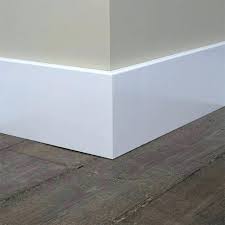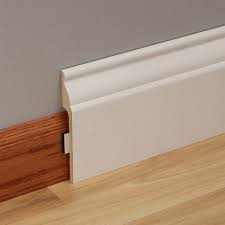Today a question came into my mind are baseboards supposed to be caulked? To find the answer I read a lot of blogs and did thorough research. I’m sure that it is not only me who has this question. So, I decided to write a blog and help people who have this question do baseboard need to be caulked?
Baseboard must be caulked to prevent gaps between baseboard, wall, and floor. There are multiple reasons why you should caulk baseboards.
- Caulking baseboards creates an Exquisite Look and generates smooth transitions between different surfaces.
- It protects from water damage and water leakage.
- Caulking prevents insect infestation as well.
Caulking is a process of filling up small gaps between doors, windows, as well as floors. Caulk is a waterproof filler and sealant that prevents the baseboard from water leakage and damage. The waterproof sealant is applied along the edges to fill the gap between the baseboard and floor or wall spaces.
Why should baseboard be caulked?
There are several reasons why the baseboard should be caulked. The primary reasons are to prevent water leakage and damage, prevent insect infestation, and for an aesthetic look.
Prevent Water Leakage and Damage
Water can sometimes leak into the gaps between the floor and the baseboard. The baseboard can rot and decay due to water leakage and seepage. That water accumulated between the floor and baseboard can freeze and can cause damage to your house.
Caulking it with waterproof filler prevents the water from seeping and damaging your baseboard. Usually, the baseboard rots as well as expands by the water left after wiping the floor.

Creates an aesthetic look
By properly filling the gaps between the baseboard and walls or floor enhances the look of your house by a lot. By caulking the gaps there is a smoother transition in the surfaces of your house which improves the cosmetic look of the house. Open gaps are the centre of attraction and shows the poor installation as well as diminish the entire look of the house.
Protection from Insect Infestation
Small gaps and cracks are entry points for insects like cockroaches, beetles, spiders, and ants to your house. Some insects like bed bugs live in cracks available in your house. Sealing gaps in your house will reduce the chances of unwanted guests in your house.
How to fill baseboard gaps?
Applying caulk to the baseboard is quite an easy and simple task. The main question is where to apply caulk to the baseboard. Many people have questions like should the bottom of the baseboard be caulked or not? Don’t worry I will answer all your questions and here is where to apply caulk to the baseboard.
Bottom of the baseboard
The very first place to apply caulk is where the floor and baseboard connects. Caulking the bottom of the baseboard helps prevent water spillage and avoids damage of the baseboard. With time the gaps between the floor and baseboard increases and caulking can prevent the gaps from widening.
Top of the baseboard
Apply caulk on the top of the baseboard where the baseboard and wall meet. Caulking solves the problem of the baseboard not touching the wall by filling the in-between gap. Caulking on the top of the baseboard is generally done for an aesthetic look. However, caulking of the top of the baseboard becomes quite tough when the gap between the wall and baseboard is too wide.
Seal entry points for insects
Gaps and cracks act as an entry point for various insects such as ants and bed bugs. So, sealing cracks is very important to avoid insects in your house. Caulking the cracks is simpler, durable, and cost-effective than spraying and powdering to prevent insects. Caulking is a one-time process as well as spending and is far better than continuous pest control treatments. After caulking the gaps you don’t need to worry for years about insects infestations.
Is caulking baseboard really beneficial?
Many people think that caulking is very in-effective and only an aesthetic thing. Constructions like building move continuously due to the expansion and contraction of the earth surface. Flooring also shifts a little bit here and there in the initial years. These movements can result in caulking to break and crack. Also, these movements lead to the baseboard shifting from the walls.

However, this shifting is very minimal but you still need to re-caulk the house in a few years. But, I think caulking the house in a few years is worth doing as it has many benefits. Wood bends and repositions depending on the change in temperature as well as humidity.
But, you don’t need to worry as caulk is a flexible material that allows the wood to move without cracking. So, using the right caulk on the top and bottom of the baseboard is very essential that will stretch and compress according to the wood shifting.
Types of caulking material
There are several different types of caulk available and its very confusing which one to get for you. I have listed here only the best three types of caulk that are most used.
Latex Caulk
Latex caulk is one of the best types of caulk that you can use as it dries within minutes. Mostly latex caulk is used for indoor caulking purposes. The benefits of using latex caulk is that has very less odour and it can be painted into various colour as well. The downsides of using latex caulk are that it is not that durable. They wear and tear quickly with a change in temperature and weather conditions.
Acrylic latex caulk
Acrylic latex caulk is a combination of latex and acrylic. Acrylic makes this caulk durable that doesn’t easily wear out due to unfavourable conditions. Acrylic latex caulk is mostly used to fill up gaps between windows, doors, and floor.
Acrylic caulk is available in different colours and it also can be painted. Although acrylic latex caulk is durable it shouldn’t be used in bathrooms and washrooms.
Silicone Caulk
Silicone caulk is used for smooth surfaces such as in kitchens and bathroom. If you want to do caulking in the kitchen or bathrooms then this is the best type of caulk you can use. This type of caulk is very flexible and highly water repellant which is perfect for bathrooms. This caulk doesn’t crack even if it completely dry out.
Silicone caulk is available in different colour but it cannot be painted. However, while applying you need to be very careful as it is very tough to clean it even by using a cleaning solvent.
Mixing different kinds of caulk is not a good idea
Many people tend to mix two or three different types of caulk thinking that it will enhance the properties of the caulk. However, this is simply a foolish mistake and the entire caulking will be waste. The combination you will make after combining two different kinds of caulk will be defective for sure.
This is because the manufacturers make each caulk to work on it’s own and mixing two caulk combination will not stick in the gaps. Never mix different caulk and only use one particular type of caulk.
Prepare the working area before caulking
Before applying the caulk make sure to prepare the area where you want to caulk. Leftover dust and particle on the baseboard can appear unaesthetic and unappealing. If the dust mixes with the caulk then the caulk doesn’t stick properly to gaps.
Make sure to use a wet cloth and then your finger to smoothen the caulk beading. As soon as you finish applying the caulk, smoothen the caulk. If you don’t smoothen the caulk immediately it will get dry and will be tough to remove.
Caulking is very simple and easy task however it is very time consuming. You never want to perform the same time consuming task again so make sure to do it properly at the first time. Removing the obstruction and clearing the way for you is important. If you want obstruction then it will make your job more tougher and frustating.
Make sure to remove the furniture from the working area and the most important thing is to keep pets as well as toddlers away. Always keep wet rug, water, and cleaner with you. Mistake can happen and you can easily correct it if you have appropriate things with you.
If you are using a silicone caulk make sure to keep household cleaner with you as these caulks can’t be cleaned with water itself.
READ:
